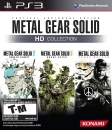| Cyborg13B said: I'm somewhat pleased with the direction Playstation 4 has taken. Let's take it by subjects: 1. X86-based CPU processing That was a very logical choice. What a bad move - giving the Playstation 3 a PowerPC-based architecture, given the fact that everyone uses X86. Everyone everywhere likes this, because it makes programming exponentially easier. Plus - the X86 is better at DirectX and OpenGL shader calls, at the same clock-rate. It is way better at operating system procedures at any clockrate. Thus - allowing for a 1.6 ghz clockrate - half the PowerPC. Virtually no heat distribution. 2. Useless hardware The blu-ray drive is useless. Doesn't visibly impact the video game. Plus - 8.4 GB for a DVD is enough for most games - probably 95% of games. The 8 GB of RAM is useless - it would take 6 minutes to load a game with that much data. 2 GB makes more sense - 1.5 minutes, and is enough for 95% of games. 8 X86-based CPUs are useless. There's no way to use 8 CPUs efficiently in in-game conditions. 2 would serve for 95% of games. Playstation 4 could easily cost $275.00 if those features were deleted. We're in the big leagues now! 1.84 TFLOPS performance. That's a lot. Playstation 3 had at best 300 GFLOPS. A TFLOP supercomputer basically - meaning in 2000 - that could've been a super-computer. 2-3 billion transistors. Plus Playstation 4 is intelligently designed. The x86 processing is one component. Another component, is the asynchronous move engines. That certainly helps to move data far more efficiently - while the game is running. Another - the 32 MB SRAM on the GPU, which allows for unbelievably massive geometry rendering, and free 2x AA at 1920 x 1080p, even at 60 fps. Plus - there's likely a vector co-processor in the CPU design we're not aware of - another massive improvement. All said and done - 100% utilization of the available hardware in the best way - that's unheard of. It's main weaknesses are: 1. The Blu-Ray drive. Not necessary. Especially a BD-XL one. A 8.5 GB DVD is enough, and far cheaper then a regular Blu-Ray drive. Games would look identical. 2. 8 CPUs. Hard to utilize 8 separate CPUs! Takes expert programming. 95% of games will use at most 2, and it would make no visual difference. 3. 8 GB RAM - hard to load 8 GB of data. Would take 6 minutes. 95% of games will only use 2 GB, and it would make no visual difference. |
None of that hardware is useless. It may take time for developers to harness the full potential of the hardware, but they have 5-10 years to do so.
1. DVDs are becoming too small for this gen of consoles even with relatively low res assets. Now look at the Install size of some PC games with higher res artwork like Shogun 2 Total War (20Gb), Rage (25Gb), Max Payne 3 (35Gb) and The Witcher 2 (18.4Gb) and it's quite obvious that DVDs are no longer going to cut it (unless all games are install only which seems unlikely).
2. Most PC games now use 3 cores for the simple reason they've been ported from the 360 version. Games like Battlefield 3 have started using up to 8 threads, so developers are already heading in this direction.
3. The RAM is fast (GDDR5) so that should negate some of your loading concerns, but there's a lot developers can do with 8Gb of RAM. That much RAM means more assets and textures loaded into memory. Even though most PC games are ports of current gen games with higher resolution assets/extra effects, they're capable of using at least 2Gb of system RAM plus the VRAM on the graphics card (which can be anything up to 6Gb). Now imagine games developed with the full 8Gb in mind.





















